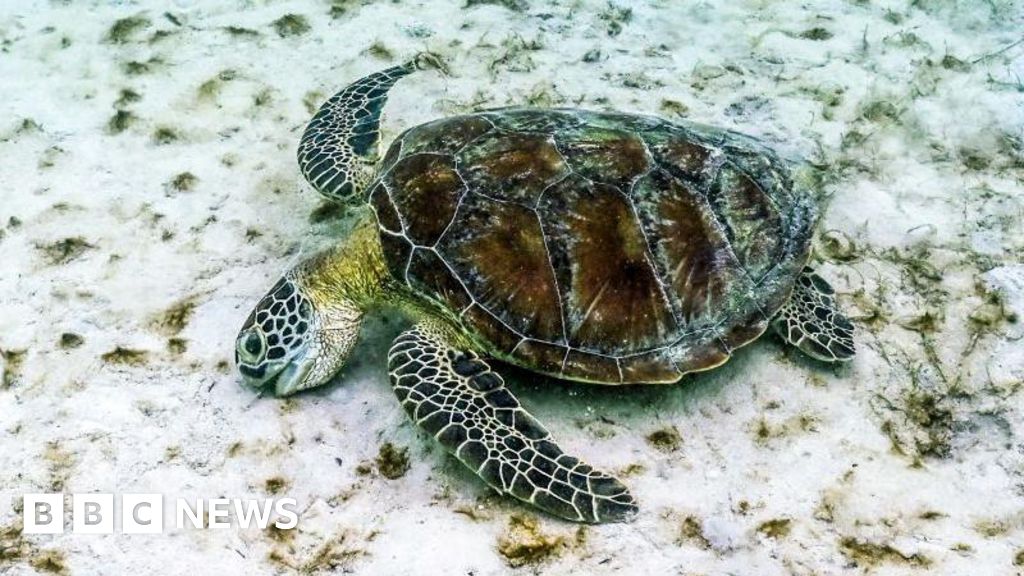
Parts of the Great Barrier Reef have experienced the most significant annual decline in coral cover since records began nearly four decades ago, according to a recent report by the Australian Institute of Marine Science (AIMS). The northern and southern sections of this vast Australian reef have suffered their most extensive coral bleaching events, primarily driven by heat stress linked to climate change.
The report highlights that tropical cyclones and outbreaks of crown-of-thorns starfish, which prey on coral, have also contributed to the reef’s decline. However, AIMS emphasizes that climate change-induced heat stress is the predominant factor. The institute warns that the reef may soon reach a tipping point where coral cannot recover quickly enough between catastrophic events, foreboding a “volatile” future for this crucial habitat.
Record-Breaking Coral Bleaching
AIMS conducted surveys on the health of 124 coral reefs between August 2024 and May 2025, continuing a monitoring effort that began in 1986. The Great Barrier Reef, often referred to as the world’s largest living structure, spans 2,300 kilometers (1,429 miles) and is home to a remarkable diversity of marine life. Repeated bleaching events have turned large areas of vibrant coral white, threatening the ecosystem that supports an estimated 25% of all marine species.
Bleaching occurs when corals are stressed by warm water temperatures, causing them to expel the symbiotic algae that provide their color and energy. Without these algae, the coral turns white and is at risk of dying if temperatures remain elevated. AIMS reported that the reef has “experienced unprecedented levels of heat stress, which caused the most spatially extensive and severe bleaching recorded to date.”
“Stressed coral will probably die if it experiences temperatures 1C (1.8F) above its thermal limit for two months. If waters are 2C higher, it can survive around one month.”
Impact of Climate Change and Natural Events
The recent bleaching events on the Great Barrier Reef are the sixth since 2016, with unusually warm tropical waters exacerbating the situation in 2024 and early 2025. While climate change is the primary driver, natural weather patterns like El Niño can also contribute to mass bleaching events. The report suggests that any recovery could take years and depends on future coral reproduction and minimal environmental disturbances.
The most affected species in the latest surveys were the Acropora corals, known for their rapid growth but also their susceptibility to heat stress and predation by crown-of-thorns starfish. Dr. Mike Emslie, AIMS research lead, told ABC News, “These corals are the fastest to grow and are the first to go. The Great Barrier Reef is such a beautiful, iconic place, it’s really, really worth fighting for. And if we can give it a chance, it’s shown an inherent ability to recover.”
Efforts to Combat Coral Decline
There has been some success with the Australian government’s program to cull crown-of-thorns starfish, which has eliminated over 50,000 starfish through the use of vinegar or ox bile injections. According to the AIMS report, “Due to crown-of-thorns starfish control activities, there were no potential, established, or severe outbreaks of crown-of-thorns starfish recorded on Central GBR reefs in 2025.”
The crown-of-thorns starfish is native to the Great Barrier Reef and capable of consuming large amounts of coral. Since the 1960s, their population has surged, likely due to nutrient run-off from land-based agriculture.
The Future of the Great Barrier Reef
The decline of the Great Barrier Reef serves as a stark reminder of the urgent need to address climate change and its impacts on global ecosystems. As the reef faces an uncertain future, efforts to mitigate climate change and protect marine biodiversity are more critical than ever. Experts emphasize the importance of reducing greenhouse gas emissions and implementing sustainable practices to give the reef a fighting chance for recovery.
As the world watches the fate of this iconic natural wonder, the ongoing research and conservation efforts will play a pivotal role in determining its future. The Great Barrier Reef’s ability to recover from these challenges will depend on the collective actions taken to address the root causes of its decline.






